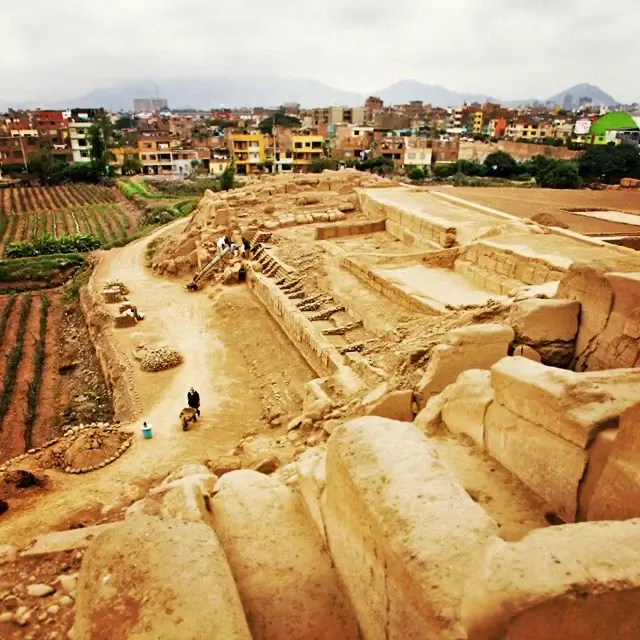Mateo Salado, archaeological site located in the districts of Pueblo Libre and Breña, in a total area of 16.4 hectares approximately, which are separated into 3 sectors are surrounded by modern buildings, an impressive panorama where the past and present merge creating a visual wonder worth admiring, do not stay without visiting Mateo Salado.
Here we leave you everything you need to know about this archaeological site and you can include it in your visit to the city of Lima.
Table of Contents
The construction of these pyramids occurred in approximately 1100 A.D. during the period known as the Late Intermediate.
These buildings had been used by the Ychsmas until the year 1430 when they were included by the Inca civilization to the Qhapaq Ñan road network in the period known as Early Horizon.

Although there is no data of a single discoverer of this complex, if we have the first mention of the pyramids in the Moralized Chronicle of Antonio de la Calancha, in his book published in 1638, who refers to these pyramids as the abode of the Inca and temple of the fishermen.
Later in 1935, the father of Peruvian archaeology, Julio C. Tello made the first studies in the place and defended the area from those people who dismantled the buildings to reuse the materials, which significantly affected the conservation of the original area.
Later and due to the disorderly growth of the city of Lima, the pyramids were separated by modern urban constructions.
This place would have had a ceremonial administrative function for the Ychsmas, it is about 5 truncated pyramids, and walled roads, which are a prominent feature of the connections to the Qhapaq Ñan on the coast.

It is the tallest pyramid of the complex, measuring 18 meters high and 164 meters long approximately. This would have been the most important temple of the Ychsmas, is characterized by large terraces and staircases on both sides of the pyramid.
It is the second in size and proportion, this pyramid is surrounded by squares and enclosures of great dimension, in its walls have been found reliefs of fishing birds, as well as drawings and paintings.
It is 9 meters high, has enclosures that ascend in a staggered manner in a north-south direction.
This pyramid is located outside the walls that formerly surrounded this complex, this is one of the smallest with only 8 meters high, the pyramid C is facing the sea, there have not yet been enough studies on this pyramid to determine its use or function.
The smallest of the pyramids, with only 6 meters high, 50 meters long and 40 meters wide, it is a Ychsma temple that at the same time during the Inca time was used as a cemetery. So far 53 burials have been found, but unfortunately only 9 of these were found intact.
This archaeological complex is in the city of Lima, located between the districts of Pueblo Libre and Breña, at the height of the 11th block of the Cercado de Lima.
Although it is possible to make the visit even by public transport, we recommend that you request the service with a formal and authorized travel agency.
The huaca of Mateo Salado is open from wednesday to sunday, from 9.00 am until 4 pm.
The entrance fees are:
It is worth mentioning that the military in exercise, over 60 years old, teachers in exercise and people with disabilities have a 50% discount on the fare that corresponds to them.
It is also necessary to make a reservation in advance through the website of the huaca Mateo Salado, as the capacity in the huaca is limited.
aplicaciones.cultura.gob.pe/MINC-RVM/reservavisita/?museo=63
